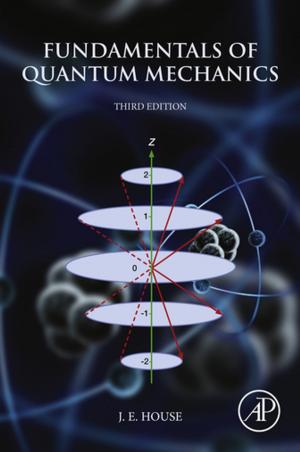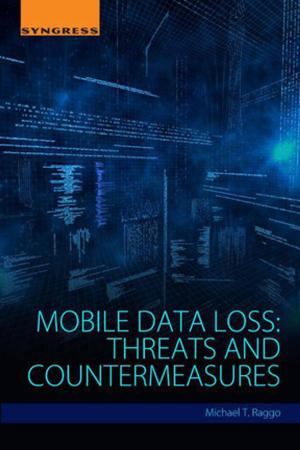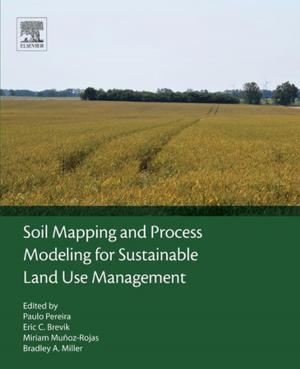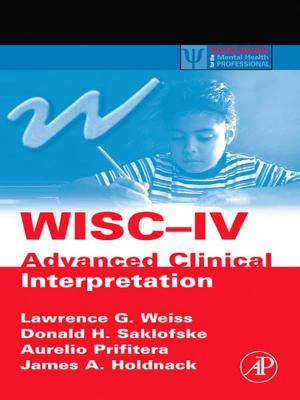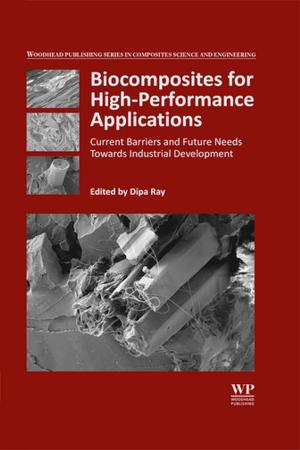Analytical Solution Methods for Boundary Value Problems
Nonfiction, Science & Nature, Mathematics, Differential Equations| Author: | A.S. Yakimov | ISBN: | 9780128043639 |
| Publisher: | Elsevier Science | Publication: | August 13, 2016 |
| Imprint: | Academic Press | Language: | English |
| Author: | A.S. Yakimov |
| ISBN: | 9780128043639 |
| Publisher: | Elsevier Science |
| Publication: | August 13, 2016 |
| Imprint: | Academic Press |
| Language: | English |
Analytical Solution Methods for Boundary Value Problems is an extensively revised, new English language edition of the original 2011 Russian language work, which provides deep analysis methods and exact solutions for mathematical physicists seeking to model germane linear and nonlinear boundary problems. Current analytical solutions of equations within mathematical physics fail completely to meet boundary conditions of the second and third kind, and are wholly obtained by the defunct theory of series. These solutions are also obtained for linear partial differential equations of the second order. They do not apply to solutions of partial differential equations of the first order and they are incapable of solving nonlinear boundary value problems.
Analytical Solution Methods for Boundary Value Problems attempts to resolve this issue, using quasi-linearization methods, operational calculus and spatial variable splitting to identify the exact and approximate analytical solutions of three-dimensional non-linear partial differential equations of the first and second order. The work does so uniquely using all analytical formulas for solving equations of mathematical physics without using the theory of series. Within this work, pertinent solutions of linear and nonlinear boundary problems are stated. On the basis of quasi-linearization, operational calculation and splitting on spatial variables, the exact and approached analytical solutions of the equations are obtained in private derivatives of the first and second order. Conditions of unequivocal resolvability of a nonlinear boundary problem are found and the estimation of speed of convergence of iterative process is given. On an example of trial functions results of comparison of the analytical solution are given which have been obtained on suggested mathematical technology, with the exact solution of boundary problems and with the numerical solutions on well-known methods.
- Discusses the theory and analytical methods for many differential equations appropriate for applied and computational mechanics researchers
- Addresses pertinent boundary problems in mathematical physics achieved without using the theory of series
- Includes results that can be used to address nonlinear equations in heat conductivity for the solution of conjugate heat transfer problems and the equations of telegraph and nonlinear transport equation
- Covers select method solutions for applied mathematicians interested in transport equations methods and thermal protection studies
- Features extensive revisions from the Russian original, with 115+ new pages of new textual content
Analytical Solution Methods for Boundary Value Problems is an extensively revised, new English language edition of the original 2011 Russian language work, which provides deep analysis methods and exact solutions for mathematical physicists seeking to model germane linear and nonlinear boundary problems. Current analytical solutions of equations within mathematical physics fail completely to meet boundary conditions of the second and third kind, and are wholly obtained by the defunct theory of series. These solutions are also obtained for linear partial differential equations of the second order. They do not apply to solutions of partial differential equations of the first order and they are incapable of solving nonlinear boundary value problems.
Analytical Solution Methods for Boundary Value Problems attempts to resolve this issue, using quasi-linearization methods, operational calculus and spatial variable splitting to identify the exact and approximate analytical solutions of three-dimensional non-linear partial differential equations of the first and second order. The work does so uniquely using all analytical formulas for solving equations of mathematical physics without using the theory of series. Within this work, pertinent solutions of linear and nonlinear boundary problems are stated. On the basis of quasi-linearization, operational calculation and splitting on spatial variables, the exact and approached analytical solutions of the equations are obtained in private derivatives of the first and second order. Conditions of unequivocal resolvability of a nonlinear boundary problem are found and the estimation of speed of convergence of iterative process is given. On an example of trial functions results of comparison of the analytical solution are given which have been obtained on suggested mathematical technology, with the exact solution of boundary problems and with the numerical solutions on well-known methods.
- Discusses the theory and analytical methods for many differential equations appropriate for applied and computational mechanics researchers
- Addresses pertinent boundary problems in mathematical physics achieved without using the theory of series
- Includes results that can be used to address nonlinear equations in heat conductivity for the solution of conjugate heat transfer problems and the equations of telegraph and nonlinear transport equation
- Covers select method solutions for applied mathematicians interested in transport equations methods and thermal protection studies
- Features extensive revisions from the Russian original, with 115+ new pages of new textual content

